
Growing Beets: From Planting Seeds To Storing Harvests
Growing beets on a large scale isn’t just about planting seeds and waiting for nature to do its thing. From precision seeders that ensure optimal plant spacing to drip irrigation systems that deliver water with pinpoint accuracy, every aspect of beet growing is being fine-tuned for maximum efficiency. Pest management, once a constant battle, is now guided by predictive models and remote monitoring. Even the beet harvesting process is different with GIS data modeling and highly efficient agricultural machinery. As global markets demand ever-higher quality, mastering these advanced techniques isn’t just an advantage — it’s becoming a necessity for growers aiming to stay competitive.
What Are The Types Of Beets?
Beet varieties for commercial farming range from classic red cultivars to unique heirlooms, each with specific growing requirements and end-use applications. Consider these common varieties:
- Detroit dark red is a popular all-purpose variety. It prefers loamy, organic-rich soils and is suitable for companion growing with Crucifers.
- Chioggia, also called Candy Stripe or Bull’s Eye, is a quick-maturing heirloom with characteristic pink-white coloration. Growing it in a temperate climate is just as simple as growing other, more common varieties.
- Golden beets produce not only tasty, mild-flavored roots but also marketable, edible greens. This beet variety grows well in light, evenly moistened soils.
- Bull’s blood variety is prized both for edible roots and greens. Cool weather and light frosts are no match for these heirloom cultivars.
- Cylindra variety’s elongated shape makes it perfect for processing. These plants have a long growing season and adapt well to heavy soils.
- Sugar beets, with their high sucrose levels, are used in sugar production. They necessitate a lengthy growing season, rich soil, and precise fertilization.
With your beetroot variety selected, understanding the ideal growing conditions more deeply is crucial for maximizing the crop’s potential.
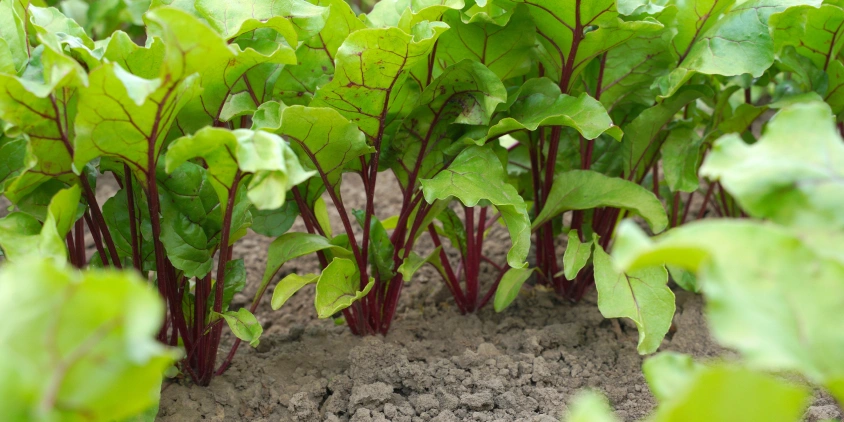
Best Growing Conditions For Beets
Beets are resilient across diverse growing conditions but excel in temperate climates with long, cool growing seasons. Fertile, well-aerated soils with plenty of organic matter support vigorous root development. Let’s go over the beetroot growing conditions further.
Beet Temperature And Sun Requirements
Cool temperatures between 50 and 75°F (10 and 24°C) are perfect for beet cultivation. These hardy vegetables are frost-tolerant, which makes them ideal for planting in early spring or late fall. Plants require at least 6 hours of sunlight per day, thriving either in direct sun or partial shade.
Europe, North America, North Africa, and South Asia are places where beets are actively grown.
Excessive heat can trigger bolting and reduce root quality. During peak temperatures, providing shade and ensuring proper airflow spacing can help alleviate heat stress effects. For better results in warmer growing regions, consider cultivating beets as a fall crop.
Evaluate potential beet fields using historical weather data (temperature, solar radiation, evapotranspiration, etc.) in EOSDA Crop Monitoring, ensuring optimal beetroot growing conditions from the start. The up-to-14-day weather forecast will help you plan ahead and adjust field operations to match upcoming conditions.
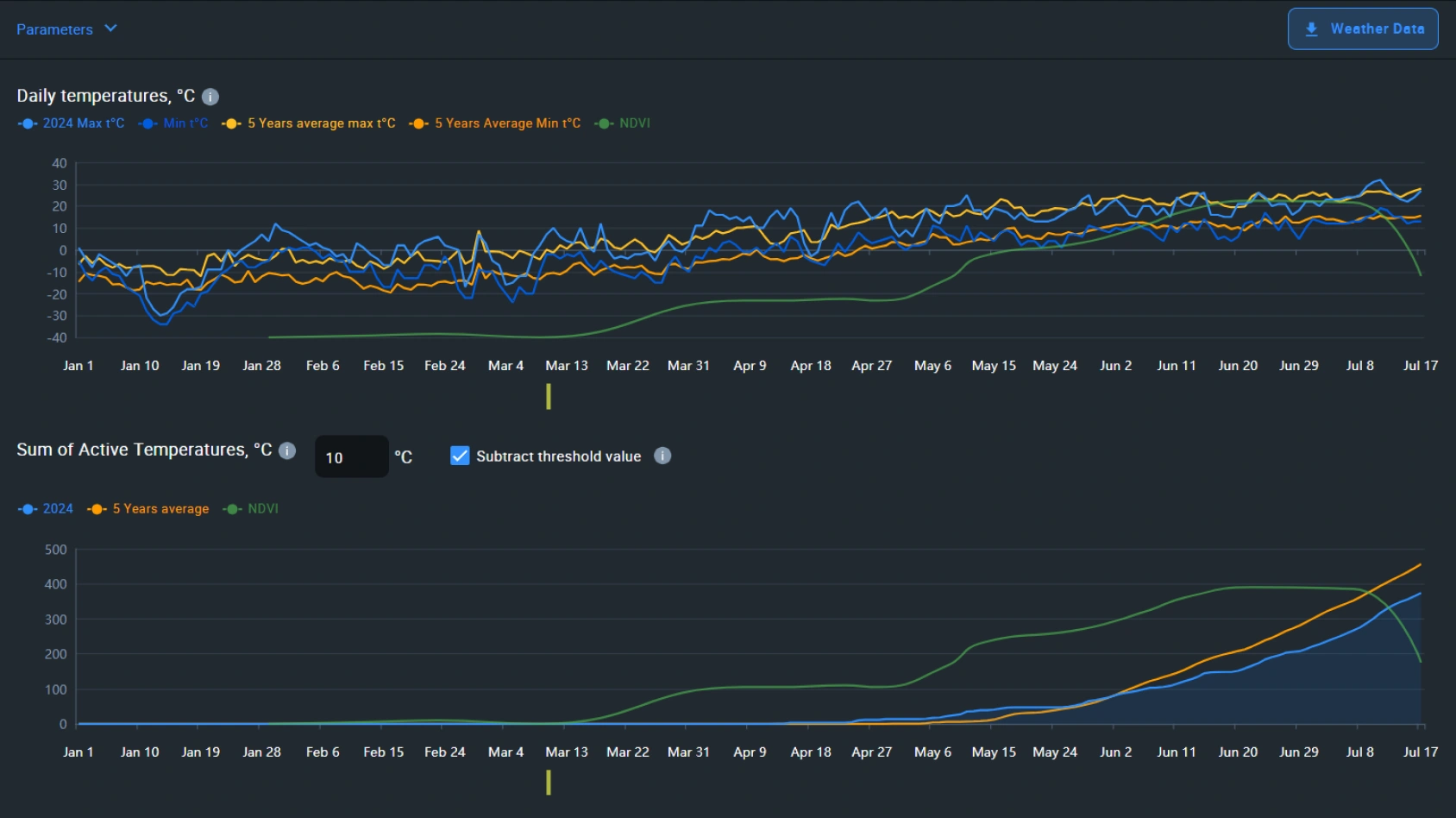
Beet Soil Requirements
While the crop prefers fertile soil, it can grow normally in average- or low-fertility conditions. The sweet spot for optimal beet soil pH lies between 6.0 and 7.0, though the crop can manage slightly alkaline growing mediums. Steer clear of acidic soils with a lower pH as they impede nutrient absorption and root growth.
To nurture perfectly round beetroots, aim to grow in loose, clean, well-drained soil. Compacted soil with any debris can lead to misshapen roots of lower market value. Enrich soils, especially poor ones, with organic matter to enhance their structure and nutrient content. For compacted soils, try raised beds or deep tillage to create a favorable growing environment .
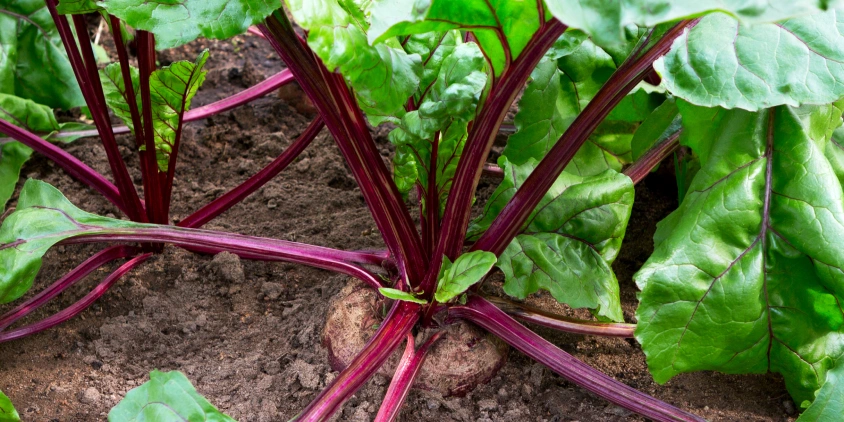
Planting Beets: Timing And Techniques
Successful commercial beet growing requires proper planting timing and techniques. Pay close attention to the soil temperature and planting spacing to get the most out of your seeds or transplants.
When To Plant Beets
Beets prefer cool temperatures, which makes early spring and late summer with soil temperatures of 50–85°F (10–29°C) ideal planting times. Be wary of peak heat planting — it’s a direct way to bolting and unmarketable vegetable quality. Fall planting can lead to a successful winter harvest in growing regions with moderate winters. Savvy growers often employ staggered plantings every few weeks for continuous harvests.
How To Plant Beets
Although beetroots can withstand transplanting better than most root crops, planting beets from seeds directly outdoors is the preferred method. Focus on proper seed placement for uniform crop development. How deep and far apart to plant beet seeds? Sow them 0.5 inch (1.2 cm) deep, with 1–2 inches (2.5–5 cm) between seeds in rows spaced 12–18 inches (30–46 cm) apart. For large-scale operations, precision seeders offer improved planting accuracy and a more evenly growing crop.
Beet Care And Maintenance Practices
Caring for growing beet crops involves managing their specific nutritional and environmental needs. These heavy feeders benefit from balanced fertilization, with additional attention to boron levels to prevent heart rot. Crop rotation is also important, as beetroots are vulnerable to fungi and pests when grown in the same field too frequently.
Fertilization During The Growing Season
Fertilizing beets requires an approach synchronized with the plant’s growth stages. Kickstart your crop with a balanced fertilizer right after planting to establish strong roots and promote early growth. As spring unfolds, fertilize your growing beetroots with nitrogen every 4-6 weeks to encourage robust leaf development. When summer arrives, switch to phosphorus feeding to support root growth. In the fall, scale back to a single feeding, helping the plants store energy for the winter months.
For flowering beets, opt for fertilizers rich in phosphorus and low in nitrogen. Over-fertilizing at this stage can lead to excessive foliage at the expense of root quality, so a single application at the flowering onset is usually sufficient.
To fine-tune your fertilization strategy, leverage variable rate applications (VRA) based on vegetation density. Utilize EOSDA Crop Monitoring’s VRA maps, derived from satellite imagery, to apply more fertilizer in the most promising zones and save your budget.
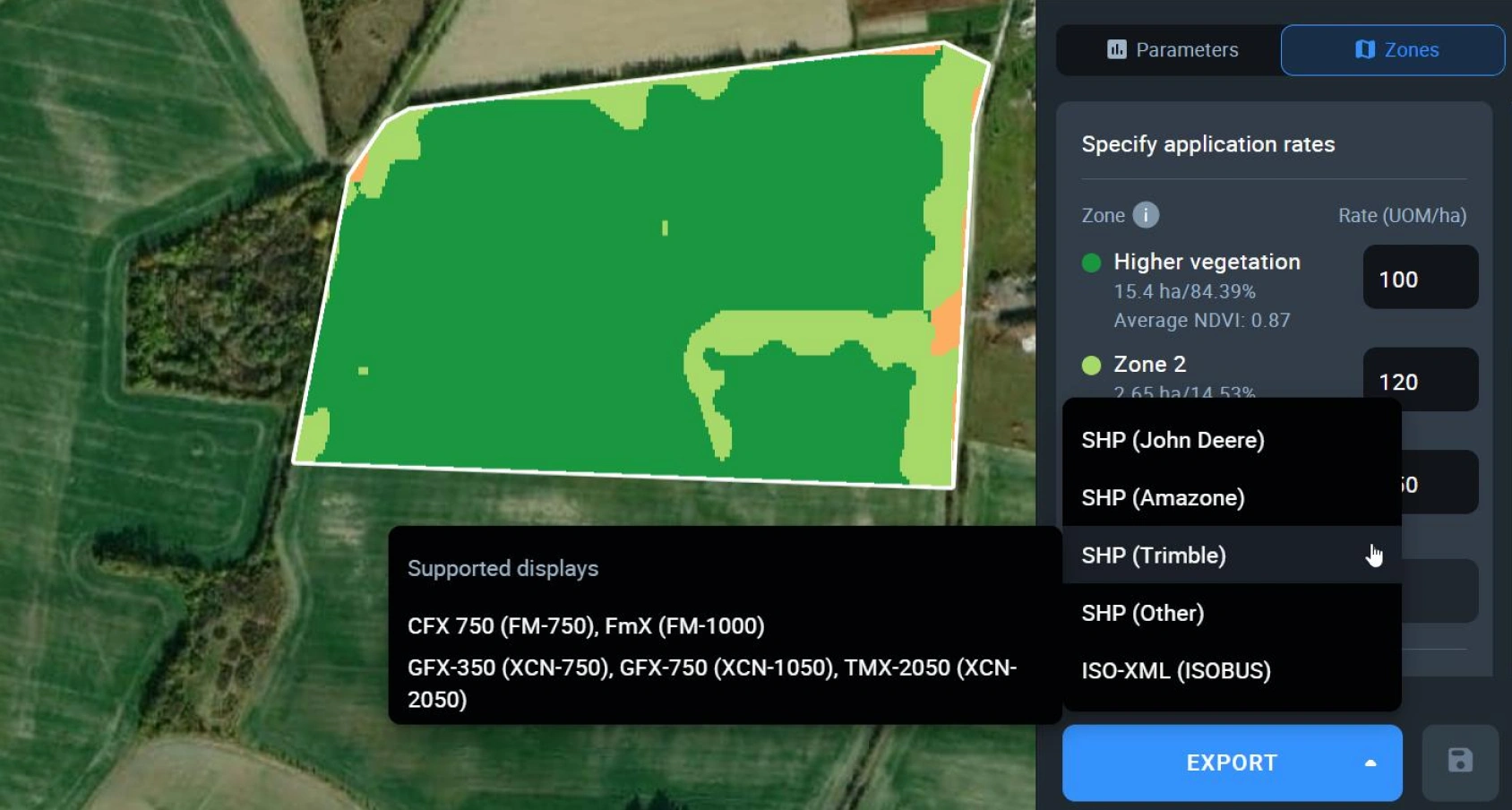
Pests And Diseases Of Beetroot And Their Management
Pests and diseases pose a multitude of threats to beet crops, potentially causing significant economic losses and even a complete crop failure. Integrated pest management strategies that include crop rotation and proper field sanitation can help mitigate these risks. We’ve compiled a detailed table of prevalent beet pests and diseases, their telltale symptoms, and proven control measures to aid you in quick identification and response.
| Pest/Disease | Symptoms | Control |
|---|---|---|
| Cyst nematode |
|
|
| Bacterial blight |
|
|
| Scab |
|
|
| Beet curly top virus |
|
|
| Beet western yellows virus |
|
|
| Aphanomyces root rot |
|
|
| Bacterial rot |
|
|
| Phoma leaf spot |
|
|
| Rhizoctonia crown and root rot |
|
|
| Rhizomania |
|
|
| Tubercle disease |
|
|
With modern data-driven crop monitoring technology, you can outsmart beetroot pests and diseases before they even strike. EOSDA Crop Monitoring’s Disease risk feature, which uses a predictive model to analyze meteorological data and crop growth phases, provides early warnings for high-risk disease conditions in your fields. This allows you to take action before problems impact crop health and productivity.
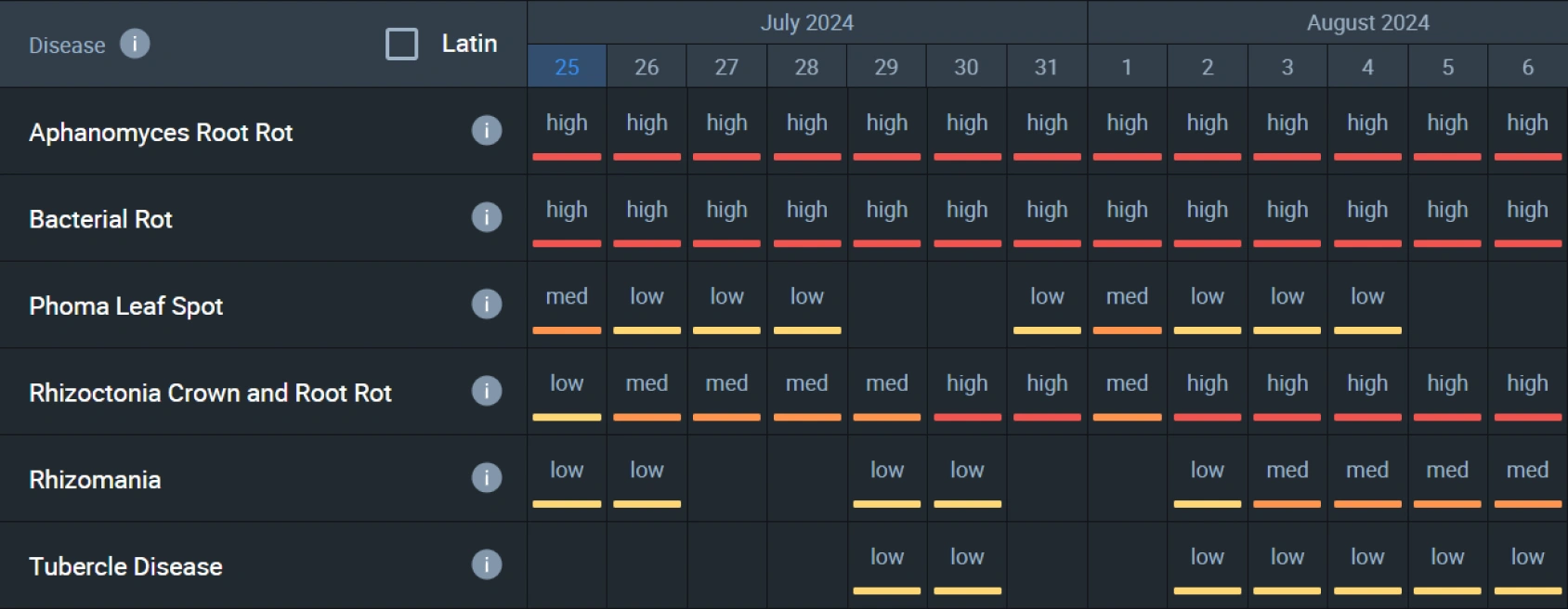
But why stop at predicting the crop’s future when you can also learn from the past? Use our Crop rotation tool to plan and track planting and harvesting patterns across all your fields to develop a holistic crop protection strategy that doesn’t just react to problems but actively prevents them.
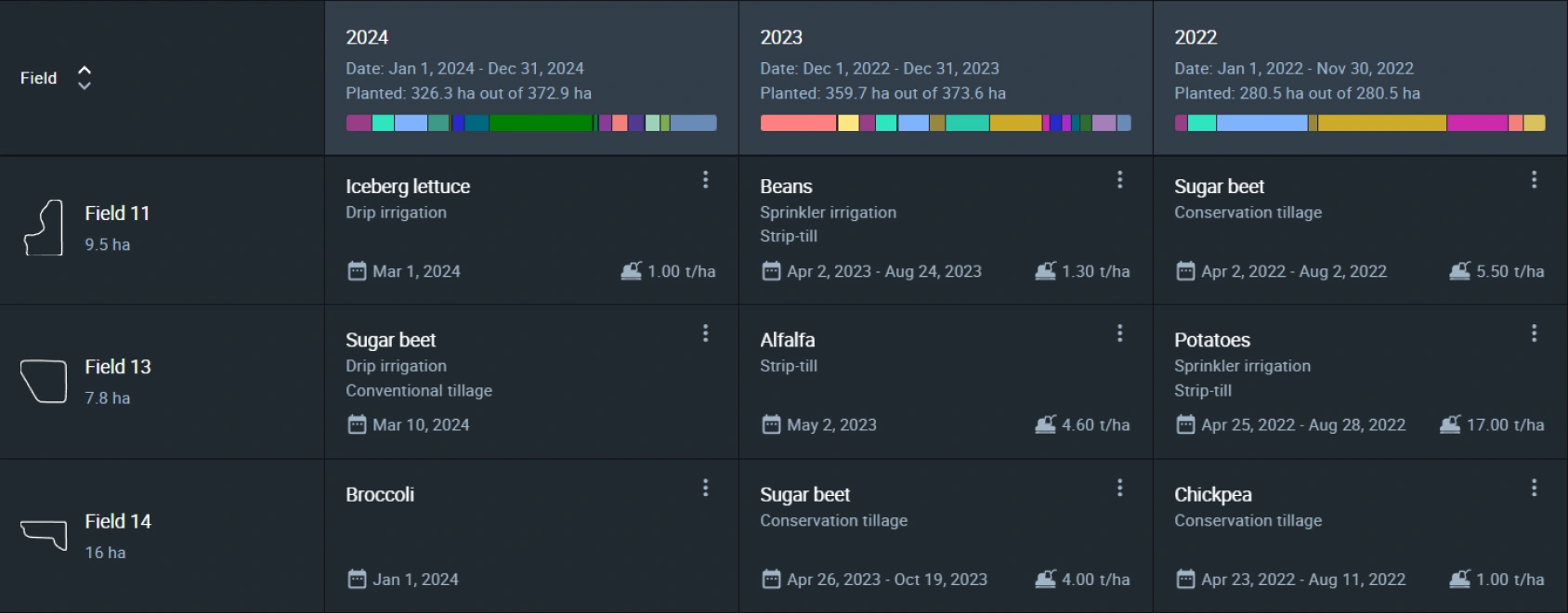
Steady Drip Irrigation
The growing crop demands steady hydration, with a weekly beetroot water requirement of about 1 inch (25 mm). Opt for drip irrigation to ensure even moisture distribution and minimize foliage wetness, cutting down on potential disease outbreaks. Keep a close eye on soil moisture levels, adjusting your watering routine to avoid waterlogged conditions that invite fungi, particularly root rot.
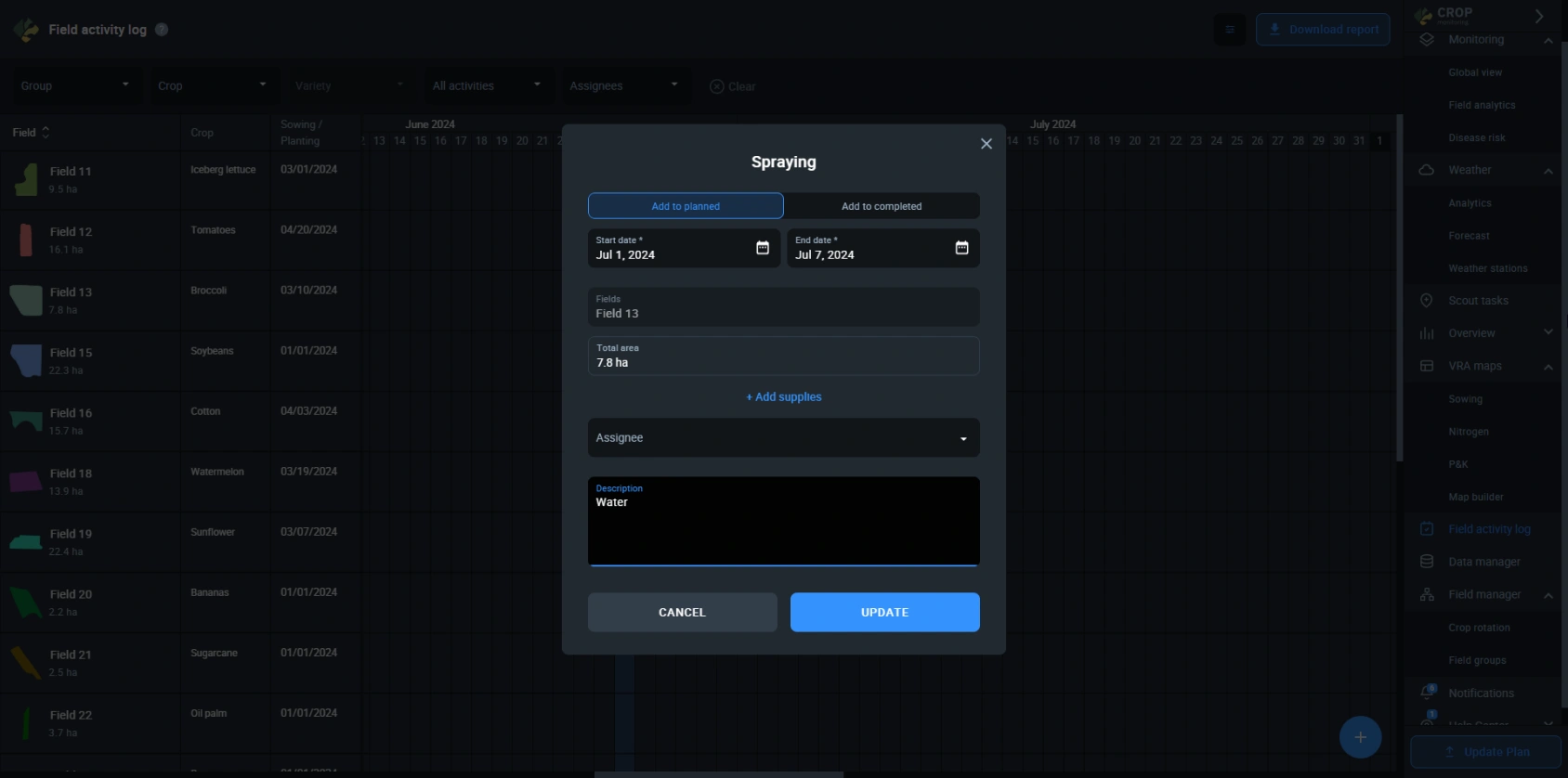
Utilize our platform’s Field activity log to meticulously plan and track irrigation schedules, rates, and team responsibilities. For more precision in beetroot farming, integrate weather forecast data from EOSDA Crop Monitoring to pinpoint the most advantageous times for watering your beet crop.
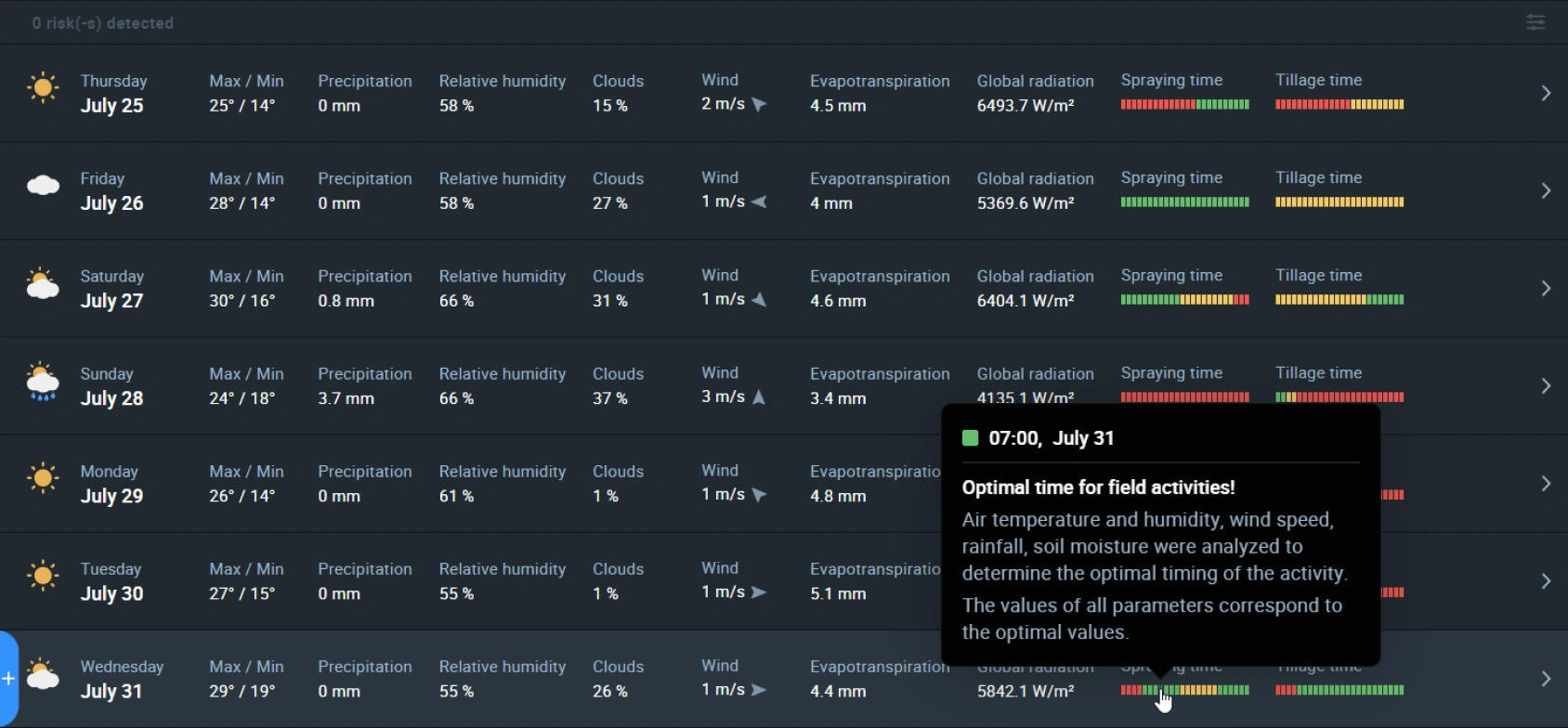
How Long Do Beets Take To Grow?
The time from seed to harvest for beets typically spans 50 to 70 days, which varies for different cultivars and growing conditions. Early-maturing types can be ready in just 50—55 days, while others may need up to 70 days to reach their full potential. Crop producers can influence this timeline by providing optimal beet growing conditions, such as timely shading and sufficient moisture.
Once the vegetative beet growth stage approaches the ripening one, it’s crucial to keep a watchful eye on crop development (particularly using satellite monitoring). Regular checks help determine when the crop is at its best for harvesting.
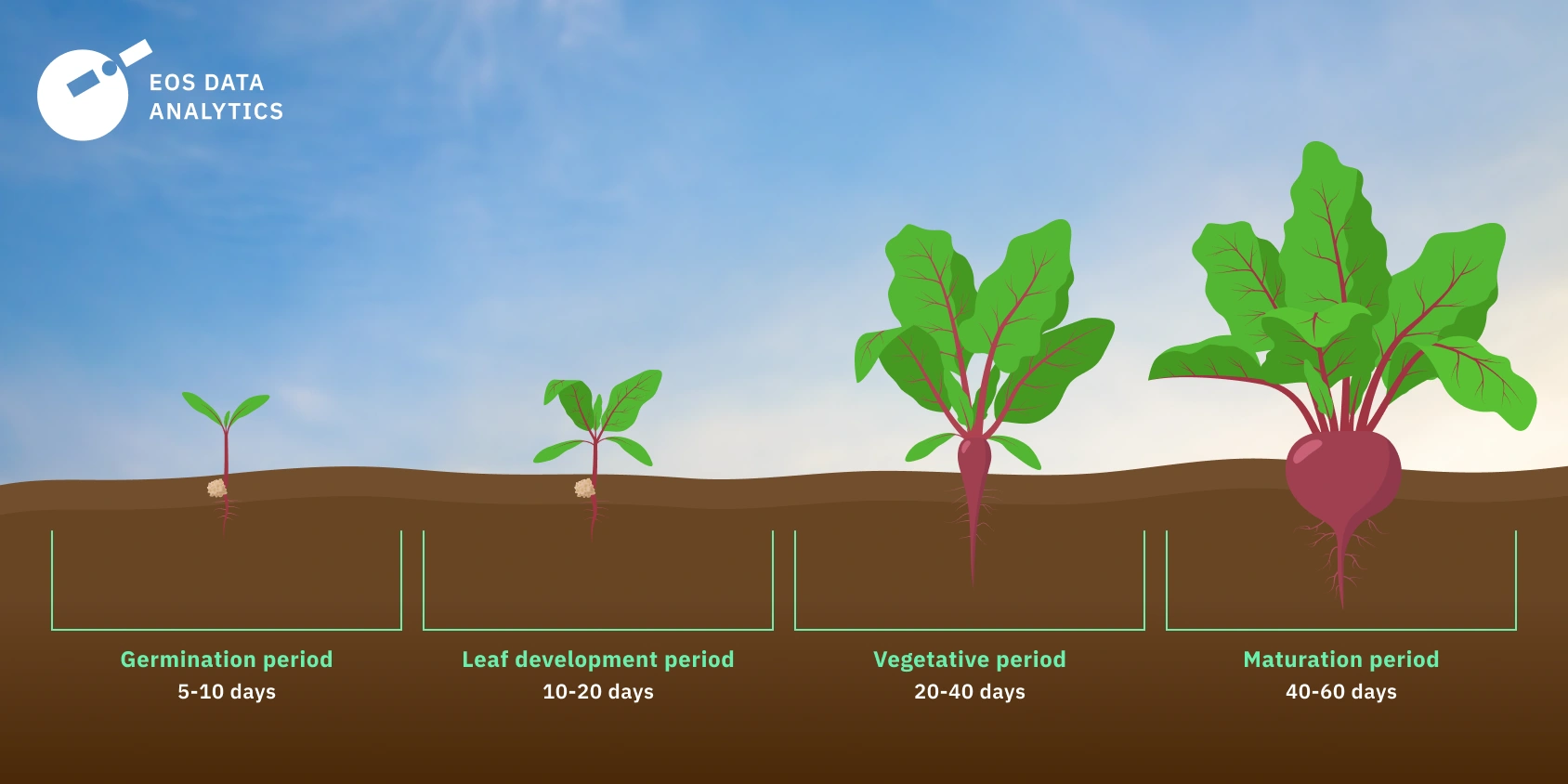
When And How To Harvest Beets
Most varieties reach their peak, striking the perfect balance between size and tenderness, at 1.5–3 inches (4–8 cm) in diameter. Weather conditions play a pivotal role in determining the ideal harvest window. Cool temperatures are generally favorable, with light frosts potentially enhancing the vegetables’ natural sweetness. Severe frosts, however, can cause root damage and poor storage quality.
To hit the crop’s sweet spot consistently, many commercial growers rely on our sophisticated harvest monitoring algorithms, which provide valuable insights into crop readiness and help plan beet harvesting operations with precision. Mechanized harvesters fulfill these time-sensitive operations efficiently on a large scale.
Places with high humidity, cold temperatures — between 32 and 40°F (0 and 4°C), and good ventilation are ideal for storing harvested beetroots. Under these optimal conditions, the vegetables can retain their market viability for several months and bring lasting profits to crop producers.
About the author:
Vasyl Cherlinka is a Doctor of Biosciences specializing in pedology (soil science), with 30 years of experience in the field. He attended the engineering college in Ukraine and received his degree in agrochemistry, agronomy and soil science in the Chernivtsi National University. Since 2018, Dr. Cherlinka has been advising EOSDA on problems in soil science, agronomy, and agrochemistry.
Recent articles

Analyze 2025 & Plan Your Best Year Yet: LandViewer Christmas Offer
It’s the most wonderful time of the year! The Christmas holidays are here, and so is your chance to analyze 2025 and plan a prosperous 2026 with more affordable Pro plans in LandViewer.

EOSDA Models Climate Change Impact On Sugarcane Yields
EOSDA modeled future temperature, rainfall, and other climate impacts on Veracruz sugarcane. The results help growers plan long-term adaptation strategies, including timing, varieties, and irrigation.

EOSDA LandViewer Black Friday Sale: Exclusive Offers & Giveaway
This Black Friday, LandViewer offers new users the chance to save on monthly plans, get extra months with yearly subscriptions, and participate in a free annual plan giveaway.